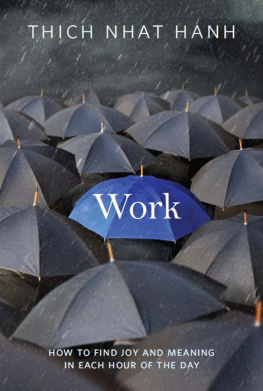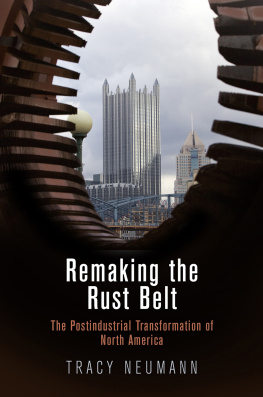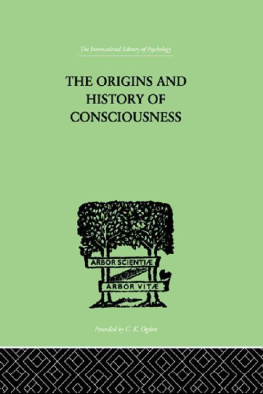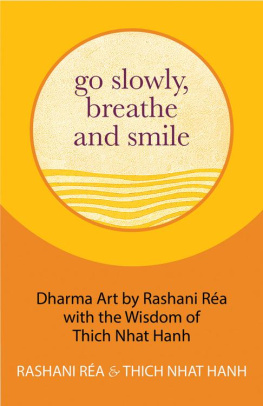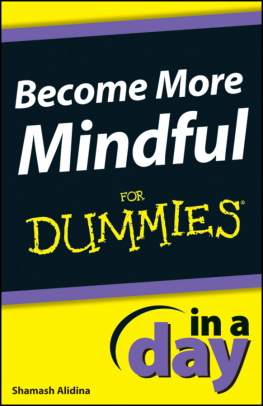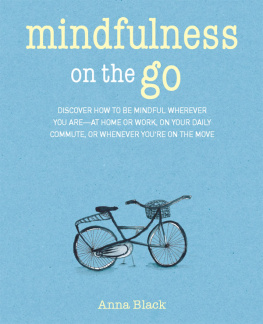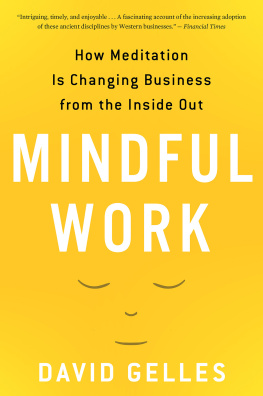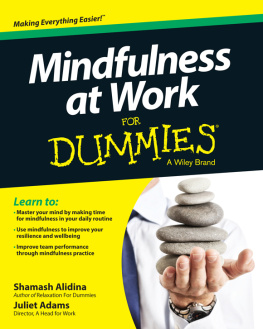Work
Work
HOW TO FIND JOY AND MEANING IN EACH HOUR OF THE DAY

Contents
the art
of mindful
living and
working
T HE WAY WE LIVE OUR LIVES and the way we earn our living is crucial to our joy and happiness. Almost half of our life is spent at work, but just how do we spend this time? The work we do is an expression of our entire being. Our work can be a wonderful means for us to express our deepest aspirations, and can be a source of great nourishment, peace, joy, transformation, and healing. Conversely, the work we do and the way we do it can also cause a lot of suffering. What we do with our lives and whether we are mindful or not determines how much peace and joy we create. If we bring our awareness to every moment, if we practice mindfulness in everything we do, our work can help us realize our ideal of living in harmony with others and of cultivating understanding and compassion.
We live in a time and place where it is not easy to find a job. We know, however, that our well-being depends not just on having a source of income, but on having a job in which we can cultivate joy and happiness, a job which is not harmful to humans, animals, plants, or the Earth. Ideally, we are able to find a job and work in such a way that our work is of benefit to the Earth and to all living beings.
No matter what your job is, there is a lot you can do toward helping others and creating a happy work environment, a place where you can work in joy and harmony, without stress and tension. The practices of mindful breathing, mindful sitting, mindful eating, and mindful walking can all contribute to a positive and stress-free environment at work. Learning the art of stopping, of releasing tension, of using loving speech and deep listening, and sharing this practice with others can have a huge impact on our own enjoyment at work and on our companys culture. When we know how to take care of our strong emotions and to establish good relationships at work, communication improves, stress is reduced, and our work becomes much more pleasant. This is a huge benefit not only to ourselves, but also to those we work with, to our loved ones, our families, and the whole of society.
Mindfulness is the act of bringing ones full attention to what is happening in the present moment. We bring our minds back to our bodies, and come home to the present moment. It begins with mindful awareness of our breathing: our in-breath and out-breath. Mindfulness is the kind of energy that helps us to be fully present, to live life in the here and now. Every one of us can generate the energy of mindfulness. When you breathe in and out, focusing on the air moving in and out of your body, this is called mindful breathing. When you drink a glass of water or a cup of tea, focusing all your attention on drinking and not thinking of anything else, this is called mindful drinking. When you walk and focus your awareness on your body, your breathing, your feet, and the steps you make, this is called mindful walking.
Bringing our attention first to our breathing, we are able to unite body and mind and arrive fully in the present moment. From this place, we can be more aware of everything thats happening in the present moment and see it with fresh eyes, without being caught in the past or carried away by worries about the future. You know that the future is just a notion. The future is made of only one substance, and that is the present moment. If you take good care of the present, there is no need to worry about the future. By taking care of the present you are doing everything you can to assure a good future. We should live the present moment in such a way that peace and joy are possible in the here and the nowthat love and understanding are possible. That is the best thing we can do for the future.
Every ordinary act can be transformed into an act of mindfulness: brushing your teeth, washing the dishes, walking, eating, drinking, or working. And of course mindfulness is not just mindfulness of positive things. When joy manifests, we practice mindfulness of joy. But when anger manifests, we practice mindfulness of anger. Whatever strong emotion arises, if we learn to practice mindfulness of that emotion, acknowledging the emotion and not suppressing it or acting on it, then transformation occurs and we are able to find more joy, peace, and awareness.
You may think you dont have time to practice mindfulness, that your workday is so full and you are too busy to practice being mindful. You may think mindfulness is something you can only practice when you have time, like when youre on vacation or outside enjoying nature. But we can practice mindfulness anywhere, anytimeat home or at work, even during our very busy workday. We dont need to set time apart in order to practice. It takes only a few breaths to generate the energy of mindfulness and to bring us back to the present moment.
We can practice all day long and get the benefit of our practice straight away. Sitting on the bus, driving the car, taking a shower, cooking breakfastwe can enjoy doing all these things. We cant say, I have no time to practice. No. We have plenty of time. This is very important to realize. When you practice mindfulness and generate peace and joy, you become an instrument of peace, bringing peace and joy to yourself and to others.
When we come home to the present moment, and let go of thoughts about the past or the future, this is called stopping. We practice stopping in order to be present for ourselves and for the world around us. When we learn to stop, we begin to see, and when we see, we understand. In this way, we can generate understanding, compassion, peace, and happiness. In order to be fully present for our work, for our coworkers, for our friends and family, we need to learn the art of stopping. Until we stop and notice what is happening in the present moment, we cannot generate joy, awareness, or compassion.
I know a man who pays close attention to walking with awareness between business appointments. He walks mindfully, aware of his in-breath and his out-breath, as he walks between office buildings in downtown Denver. Passersby smile at him because he seems so calm amidst all the rushing people. He says that his meetings, even with difficult people, have become a lot easier and more pleasant since he started this practice.
Home and Work
Are Connected
The manner in which you get ready for work, go to work, and the way you are while you are there affects not only those you work with, but also the quality of your work. Everything we do in our lives has an effect on our work. I, myself, am a poet but I love working in the garden growing vegetables. One day an American scholar said to me, Dont waste your time gardening and growing lettuce. You should write more poems instead; anyone can grow lettuce. That is not my way of thinking. I know very well that if I do not grow lettuce, I cannot write poems. The two are interrelated. Eating breakfast mindfully, washing the dishes, and growing lettuce in mindfulness are essential for me to be able to write poetry well. The way someone washes the dishes reveals the quality of his or her poetry. Similarly, the more awareness and mindfulness we bring to all our daily actions, including our work, the better our work will be.
Our personal lives are not separate from our working lives. Our inability to be mindful, to bring our full attention to what were doing in our everyday lives, has both personal and professional costs. To understand whats happening to us at work, we need to look at our home lives and our families.
The practice of mindfulness helps us to build a healthy immune system for our family. When a virus penetrates the body of an organism, the organism becomes aware that it has been invaded and produces antibodies in order to resist the invader. The immune system is an agent of protection. If there are not enough antibodies to combat the virus, the immune system quickly produces more in order to cope with the invasion and sustain itself. In this way, we can say that the immune system is a reflection of the bodys mindful awareness. Similarly, the more mindfulness we produce, the more we can protect and take care of ourselves.
Next page
